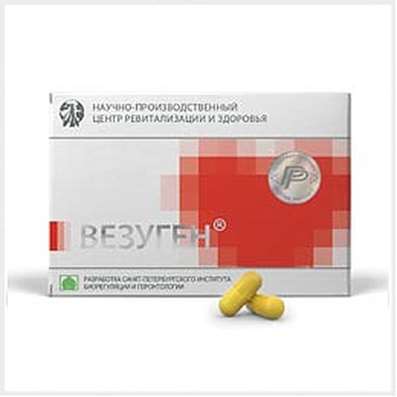Instruction for use: Mesalazine (Mesalazinum)
I want this, give me price
Pharmacological groups
NSAIDs - Salicylic acid derivatives
Nosological classification (ICD-10)
K50 Crohn's disease [regional enteritis]
Crohn's disease, Crohn's disease with fistula, Granuloma of the intestine, Granulomatous enteritis, Crohn's disease, Regional ileitis, Terminal Ileitis, Enteritis regional
K51 Ulcerative colitis
Colitis acute ulcerative, Colitis ulcerative, Ulcerative-necrotic colitis, Colitis ulcerative-hemorrhagic nonspecific, Colitis ulcerative and trophic, Colitis ulcerative idiopathic, Colitis ulcerative nonspecific, Nonspecific ulcerative colitis, Proctocolitis ulcers, Hemorrhagic purulent rectoxitis, Rectoccolitis ulcerative-hemorrhagic
Code CAS 89-57-6
Pharmacology
Pharmacological action - anti-inflammatory.
Inhibits the synthesis of PG (prostaglandins), inhibits chemotaxis, degranulation and phagocytosis of neutrophils, secretion of immunoglobulins with lymphocytes, has antioxidant properties. Has antibacterial action against Escherichia coli and some cocci (manifested in the large intestine).
Depending on the dosage form and route of administration, the release of mesalazine occurs in the rectum and colon (enema, suppository) or in the terminal section of the small intestine and large intestine (tablets). Tablets (enteric-soluble) begin to dissolve in the small intestine (at pH> 6) after 110-170 minutes, completely dissolve after 165-225 minutes after administration. During the passage through the intestine, mesalazine is released from the pills gradually, with 15-30% in the ileum, 60-75% in the colon, only 10% in the blood. The concentration in the plasma is low - after a single dose of 250 mg Cmax is 0.5-1.5 μg / ml. In the intestinal mucosa and liver forms N-acetyl-5-aminosalicylic acid. The binding of mesalazine to plasma proteins is about 40%, the metabolite is 75-83%. The mother's milk penetrates (in the form of metabolite) 0.1% of the dose. With rectal administration in daily urine, 10-30% of the dose is detected. T1 / 2 mesalazine 0.5-1.5 h, N-acetyl-5-aminosalicylic acid 5-10 h.
Effective in the treatment of colitis, ileitis in Crohn's disease, for the prevention of exacerbations of ulcerative colitis in patients with hypersensitivity to sulfasalazine, is well tolerated (even at a dose of 4.8 g / day comparable to that of placebo). Reduces the risk of recurrence in Crohn's disease, especially in patients with ileitis and a long duration of the disease.
Use of Mesalazine
Inflammatory bowel diseases (ulcerative colitis, Crohn's disease) in the stage of exacerbation and prevention of their relapses.
Contraindications
Hypersensitivity, incl. to other derivatives of salicylic acid (with the use of enemas including methyl and propylparaben), expressed violations of the liver and / or kidney function, blood diseases, hemorrhagic diathesis, peptic ulcer and duodenal ulcer, the last 2-4 weeks of pregnancy, breast-feeding, children's age (up to 2 years).
Restrictions for use
Violation of the liver and / or kidney function, pregnancy (I trimester), deficiency of glucose-6-phosphate dehydrogenase.
pregnancy and lactation
In the first trimester of pregnancy, the appointment of mesalazine is possible only on strict indications, in the last 2-4 weeks of pregnancy, the drug should be discontinued.
The action category for fetus by FDA is B.
It is recommended to stop breastfeeding for the duration of treatment due to the lack of sufficient clinical experience in this period. If a newborn breastfed has diarrhea, breastfeeding should be stopped.
Side effects of Mesalazine
On the part of the intestine: nausea, vomiting, heartburn, decreased appetite, abdominal pain, diarrhea, flatulence, increased levels of hepatic transaminases, hepatitis, pancreatitis, parotitis.
From the cardiovascular system and blood (hematopoiesis, hemostasis): palpitations, tachycardia, increased or decreased blood pressure, chest pain, dyspnea, anemia (hemolytic, megaloblastic, aplastic), leukopenia, agranulocytosis, thrombocytopenia, hypoprothrombinemia.
From the nervous system and sensory organs: headache, dizziness, sleep disturbance, depression, malaise, paresthesia, convulsions, tremors, tinnitus.
From the genitourinary system: proteinuria, hematuria, crystalluria, oliguria, anuria, nephrotic syndrome, oligospermia.
Allergic reactions: skin rash, itching, erythema, bronchospasm.
Other: fever, photosensitivity, lupus-like syndrome, alopecia, a decrease in the production of tear fluid, it is possible to increase the level of methemoglobin.
Interaction
Enhances ulcerogenicity of glucocorticoids, toxicity of methotrexate, hypoglycemic effect of sulfonylurea derivatives, hypoprothrombinemic - anticoagulants. Slows the absorption of cyanocobalamin. Weaken the activity of furosemide, spironolactone, rifampicin.
Overdose
Symptoms: nausea, vomiting, gastralgia, weakness, drowsiness.
Treatment: gastric lavage (with oral administration), laxative, symptomatic therapy.
Routes of administration
Inside, rectally.
Precautions for Mesalazine
Before the beginning, during (1-2 times a month), and also after treatment (every 3 months), control the composition of peripheral blood, the level of urea, creatinine, a general urine test. If suspected of developing a syndrome of acute intolerance, mesalazine must be discontinued. However, it should be borne in mind that the syndrome of acute intolerance in some cases can be difficult to differentiate from a severe exacerbation of inflammatory bowel disease.

 Cart
Cart





